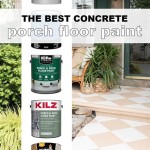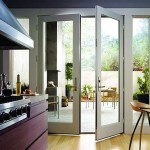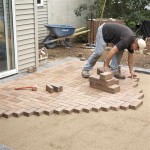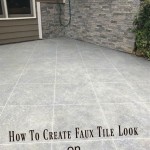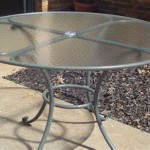Stone Patio Design Ideas: Crafting Timeless Outdoor Spaces
A stone patio represents a significant investment in a property’s aesthetic appeal and functional outdoor living space. With careful planning and design, a stone patio can transform a backyard into an inviting area for relaxation, entertainment, and dining. The enduring quality of natural stone, combined with its versatility in design and functionality, makes it a popular choice for homeowners seeking to elevate their outdoor environments. Several factors influence the final appearance and usability of a stone patio, including material selection, layout, and integration with existing landscape features.
Choosing the Right Stone for Your Aesthetic and Budget
Selecting the appropriate stone is a crucial first step in the patio design process. The type of stone directly impacts the patio's overall look, durability, and cost. Common stone types include flagstone, slate, brick pavers, concrete pavers, travertine, and granite. Each material possesses unique characteristics that cater to different aesthetic preferences and performance requirements.
Flagstone, characterized by its irregular shapes and natural variations in color, offers a rustic and organic feel. It is commonly available in sandstone, limestone, and quartzite. The natural cleft surface of flagstone provides excellent slip resistance, making it a safe option for patios exposed to moisture. The installation process involves laying individual pieces in a mosaic-like pattern, which can be time-consuming and may require professional expertise.
Slate presents a smooth, fine-grained appearance, often showcasing rich, dark hues. Its inherent layering and density contribute to its durability and resistance to weathering. Slate is often more expensive than flagstone but provides a more refined and sophisticated look. Proper sealing is crucial to prevent staining and fading, especially in areas with high sun exposure.
Brick pavers offer a classic and timeless aesthetic. Their uniform size and shape facilitate easier installation and create a neat, structured appearance. Brick pavers are available in a variety of colors and patterns, allowing for diverse design options. They are a cost-effective choice, offering excellent durability and resistance to wear and tear. However, brick can be susceptible to moss and algae growth in damp environments, requiring regular cleaning and maintenance.
Concrete pavers, while not natural stone, provide a versatile and affordable alternative. They can mimic the look of natural stone through various textures and colors. Concrete pavers are manufactured in consistent sizes and shapes, allowing for precise installation and intricate pattern designs. They are highly durable and resistant to cracking, making them suitable for high-traffic areas. The cost-effectiveness and design flexibility of concrete pavers make them a popular choice for homeowners on a budget.
Travertine, a form of limestone, offers a warm and elegant appearance with distinctive pitted textures. It is often used in upscale patio designs due to its luxurious aesthetic and comfortable surface. Travertine is relatively soft compared to other stones, making it susceptible to scratching and staining. Regular sealing and maintenance are essential to preserve its beauty and longevity. It is also susceptible to freeze-thaw damage in cold climates if not properly sealed and maintained.
Granite is an extremely durable and hard igneous rock, offering excellent resistance to scratching, staining, and weathering. It is available in a range of colors and textures, making it a versatile choice for modern and contemporary designs. Granite is typically more expensive than other stone options, but its exceptional durability and low maintenance requirements make it a worthwhile investment for long-term use.
When selecting stone, it is essential to consider the climate, intended use, and overall design aesthetic. The texture and color of the stone should complement the surrounding landscape and architectural style of the house. Moreover, budgeting for installation costs and ongoing maintenance is crucial for ensuring the long-term performance and appearance of the patio.
Designing the Patio Layout for Functionality and Flow
The layout of a stone patio significantly impacts its functionality and integration with the surrounding landscape. A well-designed layout considers the intended use of the patio, traffic flow, and access to other outdoor areas. Several layout options exist, each catering to different space requirements and aesthetic preferences.
A rectangular patio is a common and straightforward design, suitable for a variety of spaces. Its simple geometry allows for efficient use of space and easy furniture arrangement. Rectangular patios often work well as extensions of existing structures, such as decks or sunrooms. The clean lines of a rectangular patio lend themselves well to contemporary and modern designs.
A square patio offers a balanced and symmetrical appearance, ideal for creating a focal point in a garden or backyard. Its compact design makes it suitable for smaller spaces, providing a comfortable outdoor seating area. A square patio can be easily integrated with other landscape features, such as fire pits or water features.
Circular patios provide a more organic and flowing aesthetic. Their curved lines soften the overall landscape and create a welcoming and inviting atmosphere. Circular patios can be strategically placed within a garden to create a secluded seating area or a focal point. The layout requires careful planning and precise installation to achieve a smooth and even surface.
Freeform patios offer maximum design flexibility and allow for customization to fit specific landscape contours. They can seamlessly integrate with existing garden beds, trees, and other natural elements. Freeform patios often evoke a natural and informal feel, blending harmoniously with the surrounding environment. The irregular shape of a freeform patio requires careful planning and skilled installation to ensure a cohesive and functional design.
Multi-level patios provide distinct zones for different activities, such as dining, lounging, and cooking. They can be constructed using retaining walls and steps to create variations in elevation, adding visual interest and defining individual areas. Multi-level patios are particularly well-suited for properties with uneven terrain or those seeking to maximize functionality in a limited space. Careful planning and engineering are essential to ensure the stability and safety of multi-level structures.
Incorporating walkways and pathways into the patio design enhances connectivity and accessibility to other areas of the yard. Walkways can be constructed using the same stone as the patio or a complementary material to create visual continuity. They should be wide enough to accommodate comfortable pedestrian traffic and provide a safe and stable surface.
When designing the patio layout, factors such as sun exposure, prevailing winds, and privacy should be considered. Strategic placement of shade structures, such as pergolas or umbrellas, can mitigate the effects of harsh sunlight. Windbreaks, such as hedges or screens, can provide protection from strong winds. Privacy screens or plantings can further enhance the patio's seclusion. A well-designed layout considers the environmental factors and integrates them seamlessly into the overall design.
Enhancing the Patio with Landscape and Hardscape Elements
Integrating landscape and hardscape elements into the patio design enhances its aesthetic appeal and functionality. The strategic use of plants, lighting, water features, and outdoor furniture can transform a simple stone patio into a captivating outdoor living space.
Plantings soften the hard edges of the stone and add color, texture, and visual interest to the patio. Container plants, such as flowering annuals and perennials, provide flexibility in design and allow for seasonal changes. Plantings in raised beds or surrounding gardens can create a lush and inviting atmosphere. Consider the light requirements, soil conditions, and mature size of the plants when selecting species for the patio area. Native plants are often a good choice as they adapt well to the local climate and require less maintenance.
Outdoor lighting enhances the ambiance of the patio and extends its usability into the evening hours. Low-voltage lighting fixtures, such as path lights, spotlights, and string lights, can create a warm and inviting glow. Consider incorporating lighting into the landscape features, such as illuminating trees or highlighting water features. Motion-sensor lights can provide added security and safety. Proper planning and installation of outdoor lighting are essential for creating a safe and enjoyable environment.
Water features, such as fountains, ponds, or waterfalls, add tranquility and serenity to the patio. The sound of flowing water can mask unwanted noise and create a relaxing atmosphere. Water features can be incorporated into the landscape design as focal points or integrated into the patio structure itself. Consider the maintenance requirements and water consumption when selecting a water feature. Proper filtration and cleaning are essential for maintaining the cleanliness and clarity of the water.
Outdoor furniture transforms the patio into a functional living space. Select furniture that is durable, weather-resistant, and comfortable. Consider the intended use of the patio when choosing furniture pieces. Dining sets, lounge chairs, and outdoor sofas provide comfortable seating options for different activities. Outdoor rugs can add warmth and texture to the patio, defining seating areas and enhancing the overall aesthetic. Decorative cushions and throws can provide added comfort and style.
Fire pits or outdoor fireplaces create a focal point and provide warmth and ambiance during cooler evenings. They can be constructed from stone, brick, or metal, and fueled by wood, propane, or natural gas. Fire pits and fireplaces should be installed in accordance with local building codes and safety regulations. Proper ventilation is essential for preventing smoke buildup. Consider the size and placement of the fire feature to ensure it is in proportion with the patio area and does not create a fire hazard.
Pergolas and arbors provide shade and vertical interest to the patio. They can be constructed from wood, metal, or vinyl, and draped with climbing plants, such as vines or roses. Pergolas and arbors create a sense of enclosure and define outdoor spaces. They also provide support for hanging plants or lighting fixtures. Consider the size and placement of the structure to ensure it complements the overall design and provides adequate shade.
By thoughtfully integrating landscape and hardscape elements, a stone patio can be transformed into a unique and inviting outdoor living space that reflects the homeowner's personal style and enhances the overall property value.
75 Beautiful Stone Patio S Ideas Houzz

35 Stone Patio Ideas S Designs Stones Pavers Design
Stone Patios Ideas Benefits And More Haynes

25 Great Stone Patio Ideas

Flagstone Patio Ideas Cost How To Install Landscaping Network

Flagstone Patios Ideas 8 Stunning Patio Designs Stone Center

25 Great Stone Patio Ideas

Flagstone Patio Ideas Cost How To Install Landscaping Network

Paver Patio Ideas S Belgard Pavers

26 Stone Patio Designs For Your Home Stones Pavers Design
Related Posts

